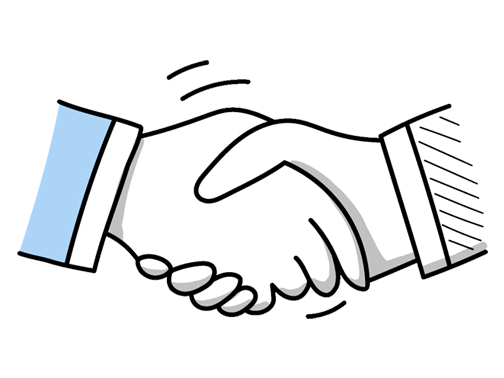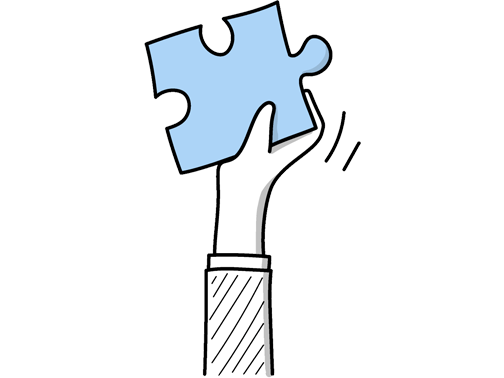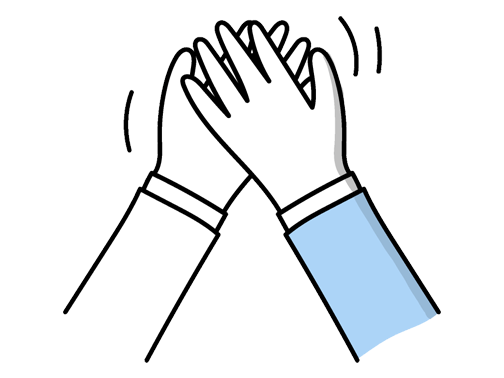Upholstery Assistant Interview Questions (2025 Guide)
Find out common Upholstery Assistant questions, how to answer, and tips for your next job interview
Practice Interviews Online - Identify your strengths and weakness in a realistic Upholstery Assistant mock interview, under 10 minutes
Practice Now »Upholstery Assistant Interview Questions
Questions like this help the interviewer understand how you collaborate and contribute to a team. You need to briefly describe the project, your specific role, and how your efforts helped the team succeed.
Example: In my previous role, we worked together to refurbish a set of antique chairs within a tight deadline. I coordinated material preparation and assisted with the upholstery, ensuring quality and efficiency. Collaborating closely with the team helped us complete the project on time, and it was rewarding to see our combined effort bring the pieces back to life.
Employers ask this question to see if you can methodically identify and fix problems with tools, ensuring work stays on track without unnecessary delays. You should explain that you first observe the issue carefully, test different causes step-by-step, fix the problem efficiently, and then clearly communicate what you found and how you resolved it.
Example: When I notice an issue with upholstery tools, I first take a moment to understand what's causing it—like checking if the staple gun is jammed or if a sewing machine thread is tangled. I then methodically test each possibility to fix it quickly. Throughout, I make sure to keep my team informed about what’s going on and what I’m doing to get things back on track, so everyone stays in the loop.
Employers ask this question to see if you understand the collaborative nature of upholstery work and the importance of teamwork in maintaining efficiency and quality. You need to say that being reliable and communicative is most important because it ensures the team works smoothly and meets deadlines.
Example: I believe the key quality is reliability. In an upholstery workshop, everyone depends on each other to keep things running smoothly and meet deadlines. For example, if someone consistently shows up on time and completes tasks carefully, it builds trust within the team. That trust helps us work efficiently and produce the best results together.
This question checks your problem-solving skills and creativity, which are essential in upholstery when standard methods don’t work. You need to briefly explain the challenge, the inventive approach you took, and the positive outcome that followed.
Example: During a job, a customer wanted a unique pattern that didn’t match standard fabric sizes. I carefully pieced smaller fabric sections together to create a seamless look. This not only saved material but gave the piece a distinctive style. It was satisfying to turn a potential setback into a feature that impressed both the client and my team.
This question assesses your attention to detail and precision, which are crucial to avoid costly fabric waste. You should say that you use a tape measure carefully, mark measurements clearly with tailor's chalk, and double-check to ensure accuracy and minimize errors.
Example: To ensure fabric measurements are accurate, I always take my time to double-check with a reliable tape measure and mark clearly before cutting. I like to measure twice, cut once, which saves fabric and avoids mistakes. Understanding that even a small error can affect the final product’s fit motivates me to be precise. For example, when upholstering a chair, careful measuring ensures the fabric wraps perfectly without excess or shortage.
Employers ask this to see how you maintain attention to detail and deliver consistent quality. You need to say that you carefully follow specifications and regularly inspect your work to catch any errors early.
Example: I always start by carefully checking materials and measurements before I begin, which helps avoid mistakes later on. Throughout the process, I take my time to stitch neatly and keep an eye on details, whether it’s fabric alignment or cushioning. For example, when recovering a chair last year, I spotted uneven seams early and fixed them right away, ensuring a smooth, professional finish every time.
What they want to understand is how you handle difficult tasks and solve problems under pressure. You need to describe a specific challenging project, explain the issues you faced, and highlight the steps you took to successfully complete it.
Example: One of the toughest projects I tackled involved restoring a vintage armchair with delicate fabric and worn padding. I took my time carefully removing old materials and choosing suitable replacements to preserve its character. Patience and attention to detail were key, ensuring the finished piece looked authentic and comfortable. It was rewarding to see the chair brought back to life while respecting its original style.
Interviewers ask this to see how you handle pressure and manage your time effectively. You should explain a specific example where you organized tasks well and stayed focused to complete the upholstery project on time.
Example: In a previous role, I had to reupholster a sofa for a client who needed it back within two days. I organised my time carefully, prioritising each step without rushing quality. By staying focused and methodical, I completed the work on time, and the client was really pleased with the result. It taught me how important planning and attention to detail are when working under pressure.
Hiring managers ask this question to see if you understand the full scope of the reupholstering process and can work carefully and precisely. You need to explain how you first assess and strip the old fabric without damage, then measure and cut new material accurately, and finally secure the fabric tightly with tacks or staples to finish the job neatly.
Example: When reupholstering a chair, I start by carefully checking its frame and taking off the worn fabric. Next, I choose suitable materials, cutting them to the right size to match the chair’s shape. Then, I secure the new fabric neatly, ensuring it’s smooth and well-finished, paying attention to details like tacking or stapling. This way, the chair looks refreshed and feels comfortable once more.
Questions like this test your problem-solving and communication skills under unexpected challenges. You need to say that you would quickly inform the client or supervisor, suggest alternative fabrics or solutions, and ensure the project stays on track without compromising quality.
Example: If the fabric I ordered was out of stock, I’d first check for similar alternatives that fit the project’s style and quality. I’d communicate promptly with the customer or team to manage expectations and explore options, like ordering from another supplier or adjusting the timeline. For example, in a previous role, suggesting a close substitute helped keep the project on track without compromising the design.
Employers ask this to see if you take pride in your work and ensure high quality. You should explain that you carefully inspect seams, cushions, and fabric alignment using tools like measuring tapes, while always comparing your work against quality standards to catch and fix any imperfections before finishing.
Example: Before finishing, I always take a thorough walk-around to spot any uneven stitching or loose seams, using good lighting to catch subtle flaws. I compare the piece against the design specs and feel the surfaces for smoothness. Sometimes, I use measuring tools to ensure everything lines up properly. This routine helps me maintain the high standards customers expect and avoid any last-minute surprises.
This question assesses your communication and teamwork skills, which are crucial for a smooth workflow. You need to say that you listen carefully, stay calm, and work with others to find a solution that keeps the project on track.
Example: When disagreements arise, I listen carefully to everyone’s viewpoint to understand their concerns. Then, I focus on finding a practical solution that keeps the project on track. For example, during a busy order, a teammate and I disagreed on fabric choices, but by discussing the pros and cons calmly, we settled on the best option that satisfied both the client and the team’s standards. Keeping communication open helps avoid bigger issues.
Questions like this gauge your practical knowledge of materials and your ability to choose the right fabric for different furniture needs. You should mention the types of fabrics you've worked with, such as cotton, leather, and velvet, and briefly explain their qualities and why they're suitable for certain upholstery projects.
Example: I’ve worked with a variety of fabrics, from sturdy leather and denim to delicate silks and velvets. Knowing how each behaves is key—for example, leather needs careful stretching to avoid damage, while velvet requires gentle handling to maintain its pile. I once reupholstered a vintage chair with brocade, which was challenging due to its pattern alignment, but the end result was well worth the extra care.
What they want to know is how you helped others learn upholstery, showing your ability to teach and support skill development. You should explain that you broke down techniques into clear steps, encouraged hands-on practice, and mention any successful results from your mentoring.
Example: Yes, I’ve guided a few new team members by breaking down upholstery tasks into clear, manageable steps. I focus on hands-on practice and check in regularly to ensure they’re comfortable with each technique. One colleague improved noticeably within weeks, gaining confidence and efficiency. I find that patience and steady encouragement really help build both skill and enthusiasm in this craft.
Interviewers ask this to see if you pay attention to detail and can maintain high-quality work. You need to explain how you carefully measure and double-check fabric before cutting, inspect seams and edges to ensure patterns match, and re-cut pieces if necessary to keep everything aligned perfectly.
Example: When working with patterned fabrics, I start by taking precise measurements and carefully cutting to ensure the design lines up perfectly. Throughout the process, I keep a close eye on alignment, making adjustments as needed to avoid any mismatches. If something doesn’t line up, I address it straight away to keep the finish neat. For example, I once re-cut a piece mid-project to make sure stripes matched seamlessly, which really made a difference in the final look.
What they want to know is how your past experience makes you a good fit for this role and how you handle real challenges in upholstery. You should briefly describe specific tasks you've done, like reupholstering furniture, and mention how you adapted to tricky fabrics or situations.
Example: In my previous role, I worked on various upholstery projects, from re-covering chairs to repairing worn cushions. There were times when the fabric didn’t quite match the original pattern, so I had to get creative with cutting and stitching to maintain the look. I also worked closely with colleagues and clients to ensure the finished pieces met their expectations, often adjusting details based on their feedback to deliver a quality result.
Interviewers ask this question to assess how well you work with others and contribute to team success. You should say you communicate clearly and listen actively, support your teammates during busy times, and keep a positive attitude to motivate the group.
Example: I focus on clear and respectful communication to keep everyone on the same page. I’m always ready to lend a hand when a colleague needs support, which helps us meet deadlines smoothly. Keeping a positive outlook, even when things get busy, helps the team stay motivated and work more efficiently together. For example, in my last role, checking in regularly with my team made a noticeable difference in our daily workflow.
Questions like this assess your commitment to continuous learning and adapting to industry changes. You should say that you regularly follow upholstery blogs, magazines, or forums and apply new techniques or materials in your work to stay current and improve your skills.
Example: I keep up with the latest in upholstery by regularly reading trade magazines and following industry forums online. Whenever I learn about a new technique or material, I like to try it out on smaller projects to see how it works in practice. I also stay connected with other upholsterers through local workshops and social media groups, which helps me share ideas and pick up fresh skills from the community.
This interview question is designed to assess your ability to catch small mistakes that could lead to bigger problems, showing your reliability and thoroughness. In your answer, briefly describe a specific situation where you noticed a detail others missed and explain how your careful attention helped avoid a costly error or delay.
Example: In a previous role, I noticed a small tear in the fabric before starting on an upholstery project. Catching it early meant we avoided compromising the overall finish and saved time redoing work. Addressing details like that upfront helps maintain quality and keeps everything running smoothly, which I believe is key in this line of work.
What they want to understand is how you manage time and stay organized under pressure. You need to explain that you assess deadlines and project complexity first, then focus on tasks that ensure timely and quality completion.
Example: When handling several upholstery projects at once, I focus on deadlines and the complexity of each task. I usually start with jobs that need quick turnaround, while planning ahead for more detailed work. For example, if I'm re-covering a chair and repairing a sofa, I’ll prioritize the simpler repairs first to keep things moving, then give full attention to the intricate re-upholstery without rushing it. Staying organized helps me manage everything smoothly.
This interview question assesses your practical knowledge and hands-on skills crucial for upholstery tasks. You need to mention key tools like staple guns, scissors, sewing machines, and how confidently you use them in your work.
Example: In upholstery, tools like staple guns, tack hammers, and sewing machines are key. I’m comfortable using these, having worked with different fabrics and frames. For example, I’ve often handled foam cutters to shape cushions precisely and used pliers to remove old staples carefully. My experience ensures I can work efficiently while maintaining quality and attention to detail.
Employers ask this question to see if you take responsibility for your work and can solve problems effectively. You should say that you would first carefully inspect and acknowledge the mistake, then fix it using the best method, and finally review your process to avoid repeating the error.
Example: If I noticed a mistake after finishing an upholstery piece, I’d first take a moment to assess what went wrong and how it might affect the final product. Then, I’d carefully correct it to maintain quality, like restitching a seam or adjusting padding. Afterwards, I’d reflect on the process to understand how to avoid the same issue next time, ensuring each project gets better and meets the standards expected.
What they want to know is if you understand the importance of precision and strength in upholstery work. You should say that you use careful measuring, consistent stitching, and proper tension to keep seams neat and secure.
Example: I focus on precise cutting and careful pinning to keep seams aligned. Using quality thread and consistent stitching tension helps avoid puckering. When working with edges, I often reinforce them with double stitching or binding, especially on high-stress areas. For example, on a chair seat, I make sure the corners are well secured to prevent wear over time. Attention to these details really makes a difference in both appearance and durability.
Employers ask this to see if you can collaborate and keep projects running smoothly. You need to say you listen actively, ask questions when unclear, and keep everyone updated to avoid mistakes.
Example: I find that staying approachable and checking in regularly helps keep everyone on the same page. For example, if I notice a change in fabric choice or timing, I’ll quickly update the team so no one’s caught off guard. Sharing progress and asking questions as we work together makes the whole process smoother and ensures we deliver a quality finish.
Questions like this assess your attention to detail and ability to follow standards, which are crucial in upholstery to ensure quality and customer satisfaction. You need to say that you carefully follow guidelines, double-check measurements, and maintain organized workspaces to keep your work consistent.
Example: To keep my work consistent, I always start by understanding the specific requirements of each piece and double-check measurements before cutting. I stick to a steady routine, whether it’s preparing the fabric or sewing, which helps maintain quality throughout. For example, when reupholstering a set of dining chairs, I ensured each cushion matched perfectly by following the same steps carefully every time.
Ace your next Upholstery Assistant interview with even more questions and answers
Common Interview Questions To Expect
The interviewer is looking for you to highlight your key skills and qualities that make you a strong candidate for the position. You can answer by discussing your relevant experience, technical skills, soft skills, or personal attributes.
Example: My biggest strengths are my attention to detail, my ability to work well in a team, and my strong work ethic. I have experience in upholstery techniques and a keen eye for quality craftsmanship. I am also a reliable and dedicated worker who always strives to do my best.
The interviewer is looking for your long-term career goals and aspirations. You can answer by discussing your desire for growth within the company, further education, or taking on more responsibilities.
Example: In five years, I see myself continuing to grow and develop my skills as an Upholstery Assistant within this company. I hope to take on more responsibilities and possibly even pursue further education in upholstery techniques. Ultimately, my goal is to become a skilled and valued member of the team.
The interviewer is looking for insight into your long-term aspirations and how they align with the company's goals. Be honest, specific, and show ambition.
Example: My career goal is to become a skilled upholsterer and eventually open my own upholstery business. I am passionate about creating beautiful and high-quality furniture pieces. I believe that by honing my craft and gaining experience in this role, I can achieve my goal.
The interviewer is looking for how you handle constructive criticism, your ability to reflect on feedback, and how you have used criticism to improve your work.
Example: Sure! One time, a customer wasn't satisfied with the way I upholstered their chair and gave me some feedback on how to improve. I took their comments on board, made the necessary adjustments, and the customer was really happy with the final result. It was a great learning experience for me and helped me improve my skills in upholstery.
Interviewees can answer by discussing a specific mistake, acknowledging responsibility, explaining how they rectified the situation, and highlighting lessons learned. Interviewers are looking for honesty, accountability, problem-solving skills, and the ability to learn from mistakes.
Example: Yes, I once accidentally cut a piece of fabric too short while working on a project. I immediately informed my supervisor, took responsibility for the error, and worked with them to find a solution. I learned to double-check measurements and be more careful in the future to avoid similar mistakes.
Company Research Tips
The company's website is a goldmine of information. Look for details about the company's history, mission, and values. Pay special attention to any information related to their upholstery services. This could include the types of materials they use, their design styles, or any unique upholstery techniques they employ. Understanding these details will help you tailor your responses during the interview to show that you're a good fit for their specific needs.
Tip: Don't just skim the website. Take notes and try to understand the company's ethos and how they operate. Look for any news or blog sections to get up-to-date information.
Social media platforms can provide a wealth of information about a company. Look at their posts, comments, and reviews to get a sense of their online presence and reputation. This can give you insights into their work culture, customer satisfaction, and current projects. For an upholstery assistant role, look for posts related to their upholstery work to get a sense of their style and quality.
Tip: Look at the company's LinkedIn, Facebook, Instagram, and Twitter accounts. Pay attention to the tone of their posts and how they interact with their followers.
Understanding the latest trends and news in the upholstery industry can give you an edge in the interview. This shows that you're proactive and interested in the industry. Look for information on new materials, techniques, or design trends. Also, check if the company has been mentioned in any industry news or articles.
Tip: Use Google News or industry-specific websites to find relevant news and trends. Try to relate these trends to the company during your interview.
Understanding a company's competitors can give you insights into the company's position in the market and their unique selling points. Look at the competitors' services, prices, and customer reviews. This can help you understand what makes the company you're interviewing with stand out and how they could improve.
Tip: Use websites like Glassdoor or Yelp to find information about competitors. Be careful not to focus too much on the competition during the interview. Instead, use this information to highlight the company's strengths.
What to wear to an Upholstery Assistant interview
- Clean, well-fitted jeans or trousers
- Comfortable, closed-toe shoes
- A neat, casual shirt or blouse
- Light jacket or sweater if weather permits
- Minimal jewelry and accessories
- Well-groomed and clean appearance
- Avoid overly bright or flashy colours
- Carry a neat and clean bag or portfolio





